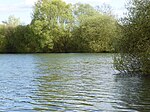Moulton College

Moulton College is a further education college based in Moulton, Northamptonshire, England. Although initially established as the Northamptonshire Institute of Agriculture in 1921, it now has expanded its teaching curriculum to cover a wide range of land-based subjects, sports, and construction. Moulton College operates a number of satellite campuses in Northamptonshire, including ones in Daventry, Silverstone, and Higham Ferrers. Moulton College teaches at all levels on the QCF framework from entry level through to doctorate level, with all BSc and MSc higher education degrees accredited with Northampton University. Academic staff at the college conduct applied research in their field of study. The college funds a number of associate lecturer posts who conduct PhD studies concurrently with teaching on undergraduate courses. The College is also a lead academic sponsor of Daventry University Technical College which opened in September 2013.
Excerpt from the Wikipedia article Moulton College (License: CC BY-SA 3.0, Authors, Images).Moulton College
West Street,
Geographical coordinates (GPS) Address Phone number Website External links Nearby Places Show on map
Geographical coordinates (GPS)
| Latitude | Longitude |
|---|---|
| N 52.2903 ° | E -0.8573 ° |
Address
Moulton College
West Street
NN3 7RR , Moulton
England, United Kingdom
Open on Google Maps




